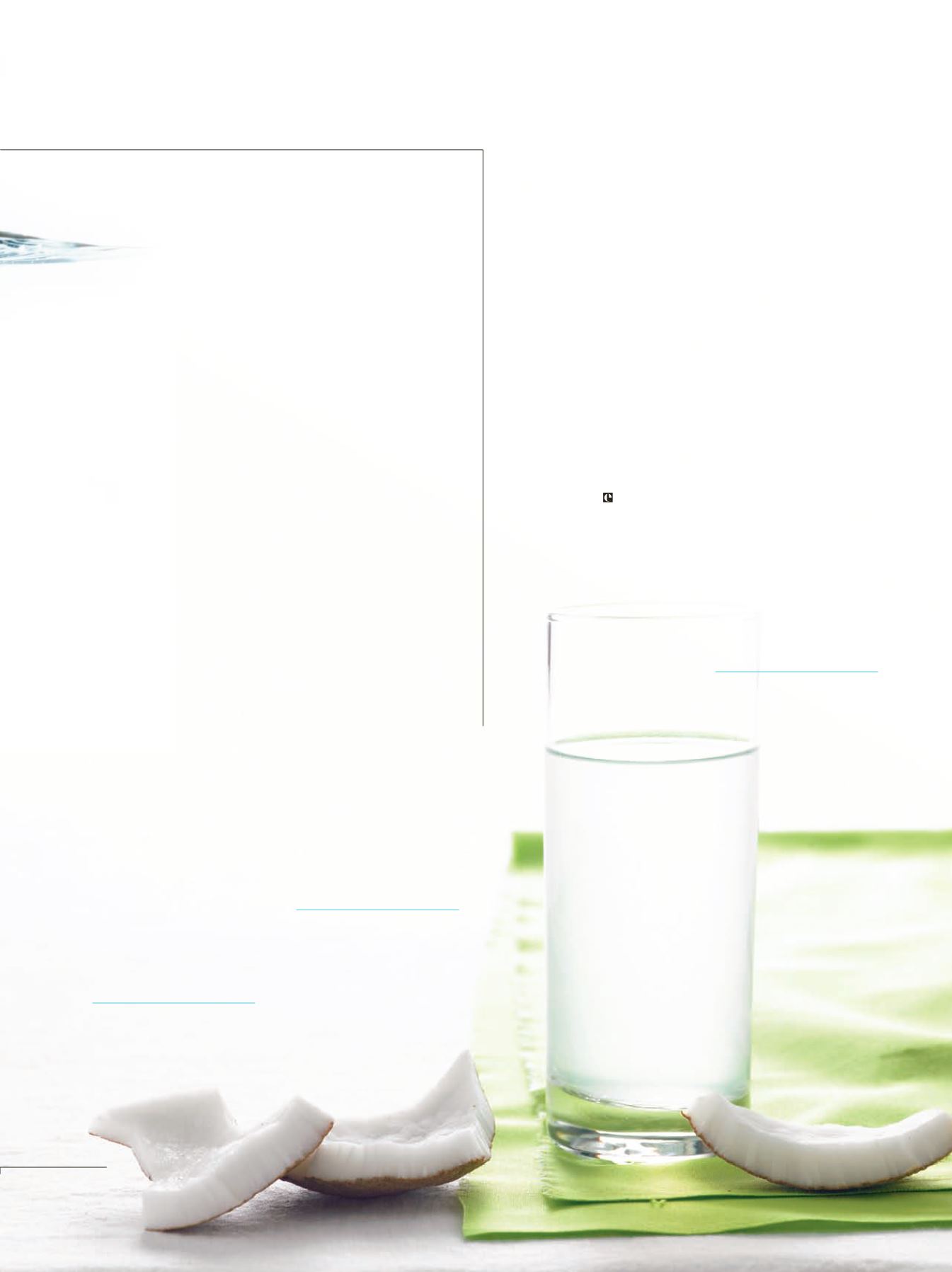
ensure your health. Water helps transport nutrients, digest food,
and eliminate waste while helping to maintain healthy skin, hair,
and nails. Plus it’s inexpensive, readily available, and calorie-free.
HOW MUCH SHOULD I DRINK?
When your body is dehydrated, you may feel tired, moody, or
begin to develop a headache. Lack of energy and fatigue can be a
sign of mild dehydration, while chronic dehydration is the
leading cause of kidney stones and may also lead to constipation
and acne.
Although studies have come up with various recommendations
over the years, many suggest that adults drink about eight 8oz glasses
of water per day, or approximately two liters. However, you should
drink more if you are physically active or living in a hot or dry
climate, as fluids are lost through sweating. During intense exercise,
you may need to replace fluids constantly during activity. Food can
also provide a portion of your water intake. Many fruits and
vegetables contain a high percentage of water, such as tomatoes,
spinach, and watermelon.
TAP-WATER SAFETY
You probably already have an idea of whether or not your tap
water is safe to drink, but even if the water is safe in the reservoir,
it can become contaminated on the way to the tap. Be aware that
historic buildings may have lead piping, and that water tanks in
tropical areas may harbor bacteria and mold. Always run the tap
before using water to minimize contamination. If you are traveling
to another country, find out before you go whether or not the water
Swap your utensils: Using an
attractive bottle or cup may
encourage you to drink more
water. And many people find
themselves drinking more if they
use a straw.
3
If you don't like the taste of water,
try adding mint, ginger, or slices
of lemon, orange, or cucumber to
your drink. Bottled or filtered
water may taste better than tap
water.
4
Use a large water bottle or
pitcher and pour from it to make
sure that you meet your hydration
goals. The pitcher provides a
visual reminder of how much
water you have drunk and how
much you have left to drink.
5
is potable. The website of the US Centers for Disease Control and
Prevention
lists the
water drinkability and other health concerns for each country.
TYPES OF BOTTLED WATER
Bottled water can help alleviate some of the concerns about tap
water safety, and many people also prefer the taste. Natural
mineral water comes from underground sources, is packaged close
to the source, and can only be subject to very limited types of
processing. It contains certain mineral and trace elements that
some believe may provide medicinal effects. Spring water can be
extracted from an underground source that flows naturally to the
surface and is bottled either by tapping the underground formation
or at the surface spring. Purified water is usually municipal source
water that has been filtered or sterilized to meet certain standards
before bottling.


